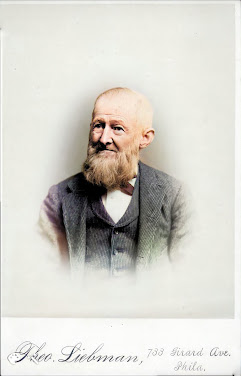We’ve talked about our Baragwanaths in Cornwall, England, but what about the branch that traveled to South Africa?
We aren’t closely related to Orlando Baragwanath, the subject of the book“Trail of the Copper King” by T. V. Bulpin – he’s my second cousin 7 times removed! Our common ancestors are Richard Baragwanath (born 1699) and Zenobia Stevens (born 1705), of Cornwall, England.
Jump forward 5 generations and we encounter John Albert Baragwanath who took his family on the trip of a lifetime – from Cornwall, England to Durban, South Africa, in 1850. John had been a Cornish sea captain.
His first wife, Elizabeth Jane Trise, mother of Elizabeth Grace, Orlando, John Albert Jr., and Emily E., passed away the year before the voyage. He quickly married Wilmot Baragwanath (a cousin) later the same year. The family set sail in February 1850 on the “Lady Bruce.”

They joined 150 other settlers intent on a new life in a new land, with the promise of land at the end of the journey.
“Each adult will be provided with an intermediate passage, including provisions on a liberal dietary scale, for the sum of 19 pounds, or a steerage passage for 10 pounds, and on arrival in Natal [Durban] have secured to him twenty acres of freehold land.”
The passage monies had to be paid in advance and each passenger needed their own knife, fork, tablespoon, teaspoon, metal plate, a hook-pot, a mug and bedding. Each ship was required to carry a doctor.
John and Wilmot’s first child together, Charles, was born on the ship, but died a few weeks after arriving at their destination, aged 8 weeks. They reached their destination on 9 May 1850.
John, Wilmot and the 4 living children settled on a farm called “Isipingo” just south of Durban. Son John Albert was later apprenticed to a saddle maker. He opened his own trading store, ran the Concordia hotel, and had some prospecting operations. He was very successful and prosperous.

He married Elizabeth Adelaide Trennery and together they had ten children. Oldest son Orlando (Orrie), born in 1872, was the stuff legends were made of!
Orlando lived to be 100 years old (photo right,) and on the occasion of that milestone, an article was written about him in the “Rhodesiana” publication. “In the autumn of 1894 a solitary passenger climbed off ...[an] ox-drawn Cape cart in Fort Victoria. . . He was Orlando Baragwanath, a young man of 22 years with some mining experience, a prospector’s zest for the unknown and an explorer’s nature.” For the next few years he worked at different mines, learning and yearning for adventure.

In May 1899, Orrie and his partner Frank Lewis, set out, their supplies packed in 50 lb. loads packed on two wagons and a four-ply canoe. They had six pack donkeys and ten armed natives. They had no need of money so they took white calico called “limbo” for currency. They had contracted for a 3-year stint with the Tanganyika Concessions Company, earning £25/month.
The surface copper had been known, worked and traded long before. But these men were the first to use dynamite to find more beneath the surface in Northern Rhodesia! They pegged and named many copper mines on their travels, and in 1901 discovered the vast copper field on the Wusikili river, which later became the great Nkana Mine and the heart of the fabulous Copperbelt.
At the spot where John Albert had his farm and hotel now stands Chris Hani Baragwanath Hospital in what is now the black township of Soweta in Johannesburg, which opened in World War II to care for British soldiers. It once held the Guinness World Record for the largest hospital on earth with almost 3300 beds but has been edged out by at least 3 others by 2016.
Some of this material was found in an article from: http://www.rhodesia.nl/rhodesiana/volume28.pdf
“Orlando Baragwanath: A Centenarian Pioneer of Rhodesia” by Roger Howman. “Rhodesiana” Publication No. 28, July 1973, The Rhodesiana Society, Salisbury, Rhodesia.
Drawings are from the book pictured above, Trail of the Copper King. This copy was given to my dad by his parents in 1961. It is presently in my possession.




















